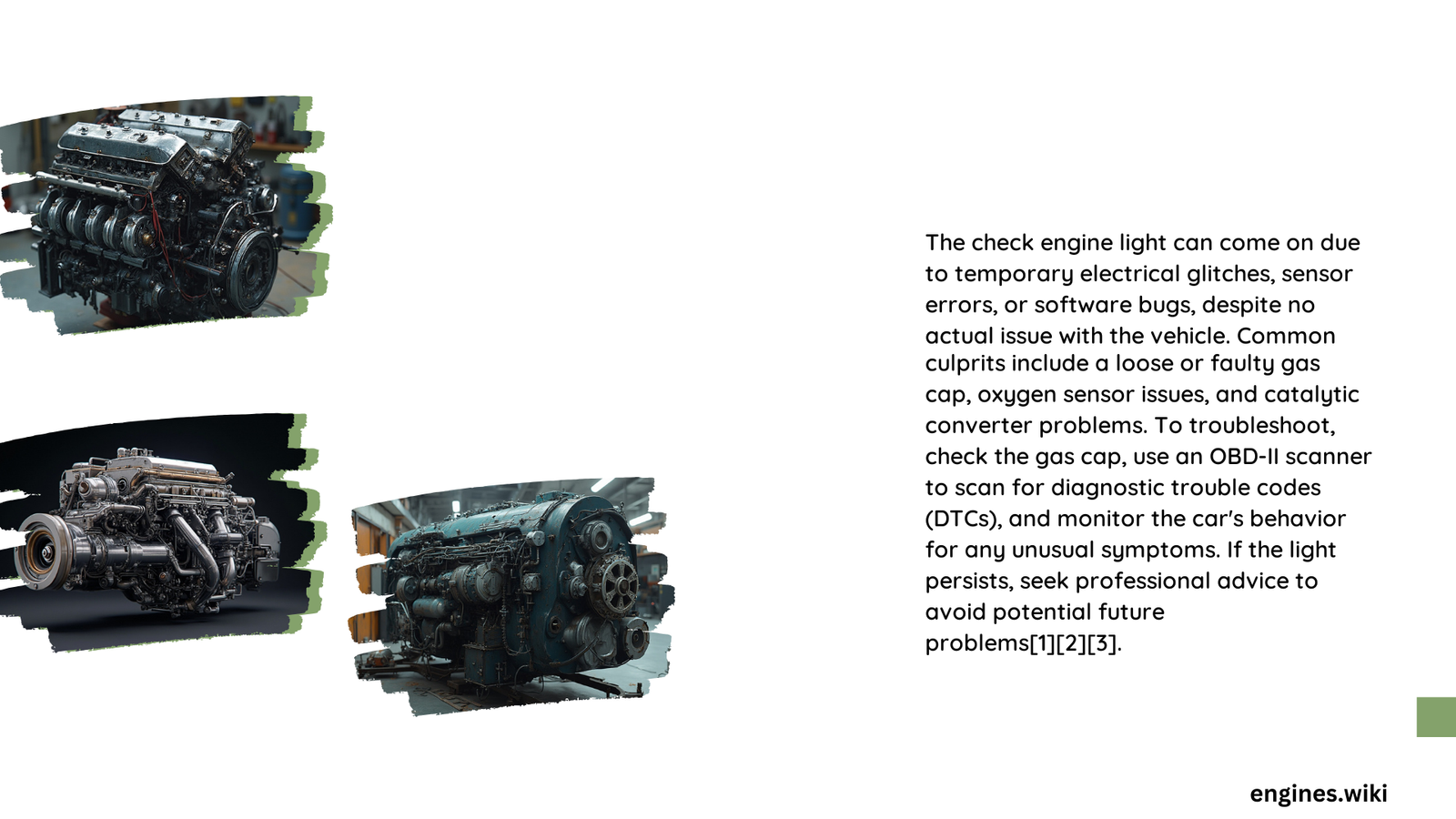Modern vehicles are complex machines with sophisticated electronic systems that can sometimes trigger warning lights without serious mechanical problems. A check engine light illuminating doesn’t always indicate a critical issue, and understanding the potential causes can save vehicle owners time, money, and unnecessary stress. This comprehensive guide explores the nuanced world of check engine light diagnostics, focusing on scenarios where the warning appears without significant underlying problems.
What Causes Check Engine Light to Activate Without Serious Issues?
Are Loose Gas Caps a Common Culprit?
One of the most frequent reasons for a check engine light activation is a loose or faulty gas cap. This seemingly minor issue can trigger the vehicle’s onboard diagnostic system due to potential evaporative emissions system leaks.
Gas Cap Diagnostic Checklist:
– Ensure gas cap is tightly secured
– Check for visible damage or wear
– Replace if seal appears compromised
– Verify proper threading when reinstalling
Can Sensor Quality Impact Warning Lights?
Sensor quality plays a crucial role in check engine light activation. Low-quality or incorrect aftermarket sensors can send erroneous signals to the Engine Control Module (ECM), causing unnecessary warnings.
| Sensor Type | Potential False Alarm Likelihood | Replacement Cost |
|---|---|---|
| Oxygen Sensor | High | $50 – $200 |
| Mass Airflow Sensor | Moderate | $100 – $400 |
| Temperature Sensor | Low | $30 – $150 |
How Do Electronic Control Modules Contribute?
The ECM itself can sometimes malfunction, generating false check engine light warnings. These electronic brain centers occasionally experience glitches that trigger unnecessary alerts.
ECM Diagnostic Strategies:
1. Use professional diagnostic scanner
2. Check for stored error codes
3. Perform system reset
4. Consult professional mechanic if persistent
What Are the Most Common Error Codes?

Which Error Codes Suggest No Serious Problems?
Several error codes frequently indicate minor issues rather than significant mechanical failures:
- P0455: Large evaporative system leak
- P0133: Oxygen sensor circuit slow response
- P0171: System running lean (Bank 1)
How Can You Reset the Check Engine Light?
What Are Effective Reset Techniques?
- Use OBD-II scanner to read codes
- Identify potential minor issues
- Tighten or replace gas cap
- Clear codes using scanner
- Drive vehicle to confirm resolution
When Should You Seek Professional Help?
How to Determine Diagnostic Necessity?
While many check engine light activations are minor, certain scenarios warrant professional inspection:
– Persistent warning after reset
– Accompanying performance issues
– Multiple error codes
– Vehicle age and maintenance history
Cost Considerations for Diagnostics
What Expenses Might You Encounter?
- Basic diagnostic scan: $50 – $150
- Sensor replacement: $100 – $400
- Minor repairs: $50 – $200
- Complex ECM issues: $500 – $1,000
Pro Tips for Check Engine Light Management
- Always use high-quality replacement parts
- Maintain regular vehicle maintenance
- Keep detailed service records
- Don’t ignore persistent warnings
Final Recommendations
A check engine light doesn’t always signify catastrophic failure. Methodical diagnosis, understanding potential causes, and strategic troubleshooting can often resolve issues quickly and cost-effectively.
